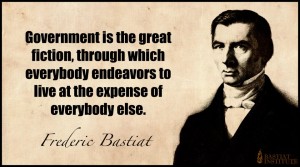For decades, the act of driving a cab has been preposterously overregulated. Government hacks in almost every jurisdiction have enacted stupid laws and policies requiring government licensing and approval of all cab companies. In many states, cab companies are ridiculously regulated as “public utilities” like water and electricity. Cab companies, in turn, have paid off politicians to keep these corrupt systems going and to keep out competition.
The ubiquity of handheld devices such as I-Phones, however, has spurred innovation. People seeking a ride can simply punch into an “app” and contact other people who happen to be driving a car in the same direction. It is known as “ridesharing.”
Now, after just a couple years of widescale ridesharing in some cities–and the rise of ridesharing companies such as Uber–we have enough data to compare such ridesharing operations with traditional government-licensed-and-approved cab companies. See here.
1) Uber is serving poor neighborhoods better than government-approved taxis, providing more rides than taxis to people from neighborhoods with lower-than-average-household-incomes.
2) It is safer for drivers to work for a ridesharing company compared to a taxi company. Taxi drivers carry cash and are attractive targets for robberies; Uber drivers are paid electronically through the “app,” and do not engage in cash transactions.
3) Uber and other ridesharing firms also cut down on drunk driving, and thus save lives. They provide additional options for people seeking rides after drinking at bars and restaurants. See this report.
Despite this growing data, government-licensed cab companies are presently lobbying heavily to get their uncle government to ban ridesharing.


